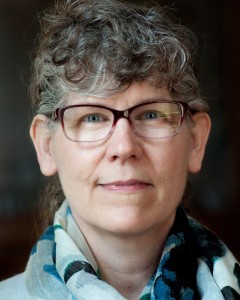Solutions to high-poverty schools must be Both…And
- likoau
- Jul 27, 2015
- 4 min read
Research and success stories from across the country make it clear that de-concentrating poverty and increasing socioeconomic diversity in schools significantly improve academic outcomes for poor students, without adversely impacting the performance of those who are more affluent. And while poverty is most concentrated in Rochester schools, many suburban districts also face growing rates of poverty in their classrooms.
So we must engage both city and suburbs in finding a variety of ways for the good of our entire community to get to what Beth Laidlaw referred to last week as the Yes Zone.
Don Pryor is a researcher for the Center for Governmental Research and a member of the GS4A leadership team
Various potential systemic changes that would help reduce concentration of poverty have surfaced through the broad GS4A process, incorporating research and ongoing community conversations. These include, for example:
voluntary magnet schools open to students from anywhere in the county,
shared learning partnerships between combinations of districts or schools, and
broadening the Urban-Suburban program to expand movement of students from suburban to city schools in addition to the current city-to-suburban transfers.
But as we think about systemic change to foster diversity for as many students as possible, we must also be aware of those not included in magnets, or charter school options, or the Urban-Suburban program. We must be very careful not to inadvertently drain more students and resources from the city, leaving those students whose families did not voluntarily choose an alternative program concentrated in schools that are even poorer and more racially isolated than city schools are today.
Frankly, this has been a problem in the past with the one-way Urban-Suburban program, and it’s a problem with many of our charter schools, which are often just as segregated as other city public schools. While these programs have offered attractive options for many city families, they have often attracted many of the brightest and most motivated kids and families, leaving greater concentrations of behavioral problems and economic and racial isolation behind. So in our work to create expanded options and more socio-economically integrated schools, we have to be mindful not to inadvertently make things even worse for those not included.
So, what might all this mean and look like in the future? First, it means not just transferring city students to suburban schools. As leaders of the Urban-Suburban program recognize, it needs to be a suburban-to-urban program as well, to create greater economic and racial balance. And for that to happen, there must be strong magnet schools in the city that offer options that suburban kids will want to be part of.
Such programs exist, and with replication or expansion of available slots, we have received strong indications that numbers of suburban students would be interested in attending city schools such as P-Tech at Edison, School of the Arts, School Without Walls, Montessori, World of Inquiry expeditionary learning, and the International Baccalaureate program at Wilson Magnet School. Expanding opportunities for new suburban students while maintaining existing slots currently filled by city students would increase diversity in the schools and reduce the concentration of poverty. GS4A wants to work with the City School District to help strengthen and promote these programs so they are better options for both city and suburban students.
City magnet schools could be supplemented by others developed on campuses or in other school districts. These magnets would draw students from any district because they would provide special-focus opportunities that could not cost-effectively be offered by individual districts. Raleigh, Omaha, Minneapolis and other regions have proven the value of such schools in attracting diverse student bodies and strengthening academic opportunities and outcomes across city and suburban boundaries.
An array of magnet schools offers great potential but also the likelihood that many neighborhood schools will remain segregated, at least initially. We must make better use in the meantime of resources to strengthen promising but struggling neighborhood schools. Highlighting the urgency, some 15 of those schools are currently on the state list of “receivership schools” targeted for special attention over the next couple years. GS4A has consistently said multiple solutions will be needed to counter the effects of concentrated poverty. So while we continue to focus on systemic changes, we also support those working to strengthen neighborhood schools, through the receivership process and in other ways, so that better schools will be available for those who choose to remain in schools where they are.
We hope these schools will evolve as strong neighborhood schools, perhaps developing strengths that could over time make some of them magnets for city and suburban middle class students, to help further strengthen both diversity and neighborhood-based schools.
There is no one single approach to addressing poverty concentrations in our schools, as we must look for both broad community-wide systems change and stronger in-place neighborhood schools, rather than seeing one or the other as THE solution. Together, we must find varied pathways that can contribute to reducing the effects of concentration of poverty as part of this community’s array of anti-poverty solutions.







Comments